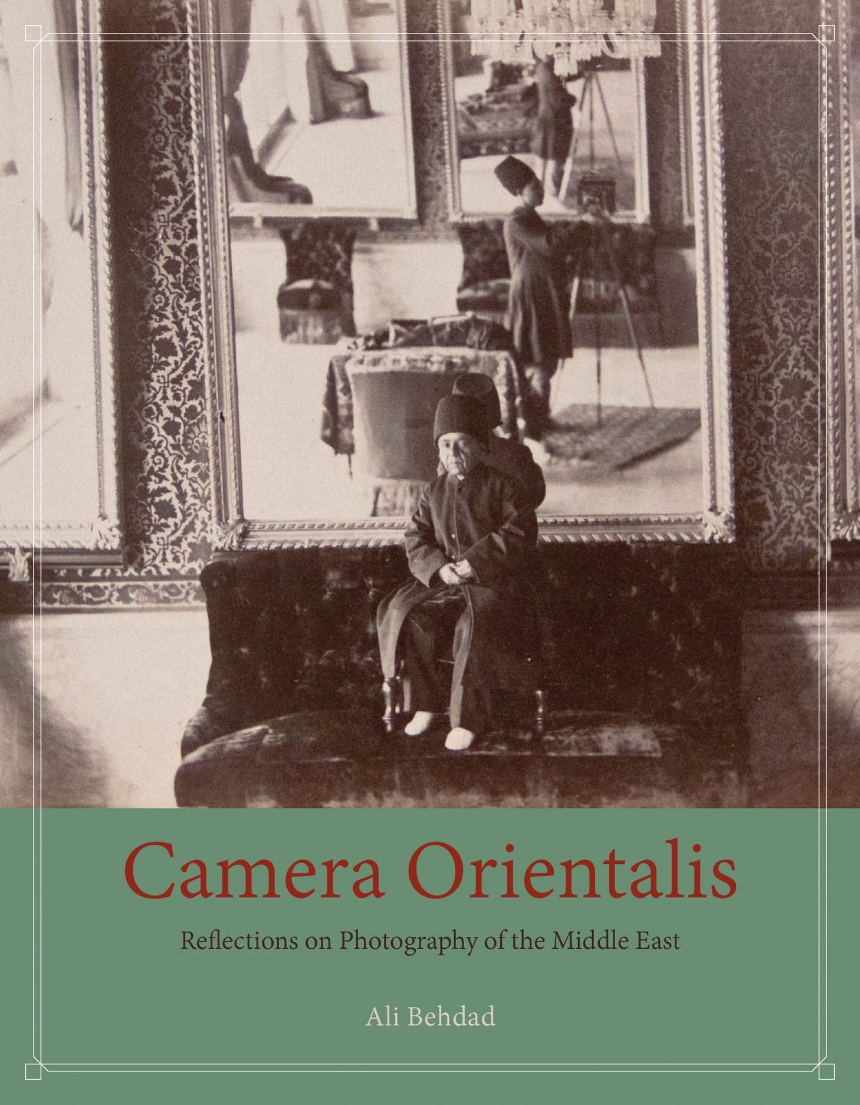Camera Orientalis
Reflections on Photography of the Middle East
In the decades after its invention in 1839, photography was inextricably linked to the Middle East. Introduced as a crucial tool for Egyptologists and Orientalists who needed to document their archaeological findings, the photograph was easier and faster to produce in intense Middle Eastern light—making the region one of the original sites for the practice of photography. A pioneering study of this intertwined history, Camera Orientalis traces the Middle East’s influences on photography’s evolution, as well as photography’s effect on Europe’s view of “the Orient.”
Considering a range of Western and Middle Eastern archival material from the late nineteenth and early twentieth centuries, Ali Behdad offers a rich account of how photography transformed Europe’s distinctly Orientalist vision into what seemed objective fact, a transformation that proved central to the project of European colonialism. At the same time, Orientalism was useful for photographers from both regions, as it gave them a set of conventions by which to frame exotic Middle Eastern cultures for Western audiences. Behdad also shows how Middle Eastern audiences embraced photography as a way to foreground status and patriarchal values while also exoticizing other social classes.
An important examination of previously overlooked European and Middle Eastern photographers and studios, Camera Orientalis demonstrates that, far from being a one-sided European development, Orientalist photography was the product of rich cultural contact between the East and the West.
Considering a range of Western and Middle Eastern archival material from the late nineteenth and early twentieth centuries, Ali Behdad offers a rich account of how photography transformed Europe’s distinctly Orientalist vision into what seemed objective fact, a transformation that proved central to the project of European colonialism. At the same time, Orientalism was useful for photographers from both regions, as it gave them a set of conventions by which to frame exotic Middle Eastern cultures for Western audiences. Behdad also shows how Middle Eastern audiences embraced photography as a way to foreground status and patriarchal values while also exoticizing other social classes.
An important examination of previously overlooked European and Middle Eastern photographers and studios, Camera Orientalis demonstrates that, far from being a one-sided European development, Orientalist photography was the product of rich cultural contact between the East and the West.
224 pages | 4 color plates, 80 halftones | 7 x 9 | © 2016
Art: Middle Eastern, African, and Asian Art, Photography
Culture Studies:
History: Middle Eastern History
Literature and Literary Criticism: General Criticism and Critical Theory
Reviews
Table of Contents
List of Illustrations
Acknowledgments
Introduction: Camera Orientalis
1 The Orientalist Photograph
2 The Tourist, the Collector, and the Curator: On the Lives and Afterlives of Ottoman-Era Photography
3 The Politics of Resident Photography in the Middle East: Reflections on Antoin Sevruguin’s Photographs of Qajar-Era Iran
4 In My Grandfather’s Darkroom: On Photographic (Self-) Exoticism in the Middle East
5 Local Representations of Power: On Royal Portrait Photography in Iran
Afterword: On Photography and Neo-Orientalism Today
Notes
Bibliography
Index
Acknowledgments
Introduction: Camera Orientalis
1 The Orientalist Photograph
2 The Tourist, the Collector, and the Curator: On the Lives and Afterlives of Ottoman-Era Photography
3 The Politics of Resident Photography in the Middle East: Reflections on Antoin Sevruguin’s Photographs of Qajar-Era Iran
4 In My Grandfather’s Darkroom: On Photographic (Self-) Exoticism in the Middle East
5 Local Representations of Power: On Royal Portrait Photography in Iran
Afterword: On Photography and Neo-Orientalism Today
Notes
Bibliography
Index
